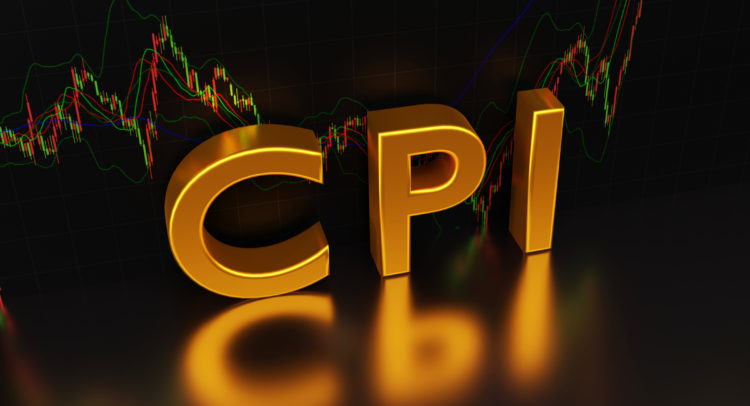Stock indices finished today’s trading session much lower. The Dow Jones Industrial Average, the S&P 500, and the Nasdaq 100 decreased by 3.98%, 4.35%, and 5.51%, respectively.
Discover the Best Stocks and Maximize Your Portfolio:
- See what stocks are receiving strong buy ratings from top-rated analysts.
- Filter, analyze, and streamline your search for investment opportunities with TipRanks’ Stock Screener.
The communications sector was the session’s laggard, as it lost 5.51%. Conversely, the energy sector was the session’s leader, with a loss of 2.53%. In addition, WTI crude oil is down just 0.58%, falling to $87.50 per barrel.
Furthermore, the U.S. 10-Year Treasury yield increased to 3.418%, an increase of almost six basis points. The Two-Year Treasury yield also increased but by a much larger amount. It is now sitting at 3.745% after a 17 basis-point increase. This brings the spread between them to -32.7 basis points. The negative spread indicates that investors still have fears of a recession.
Compared to yesterday, the market is pricing in a higher chance of a higher Fed Funds rate for the end of the year. The market’s expectations for a rate in the range of 4% to 4.25% increased from 23.41% (as of yesterday) to 41.18% currently. Conversely, the expectations of a rate in between 3.75% to 4% decreased to 15.83%, down from 68.04%. In addition, the market is now assigning a 34.16% probability for a range of 4.25% to 4.5%, up from 2.04%.
Today’s Carnage Continues on Wall Street
Last Updated 1:15PM EST
Stocks continue to trend lower in today’s trading session. As of 1.15 p.m. EST, NASDAQ, the S&P 500, and the Dow Jones Industrial Average are all in the red with a drop of 3.79%, 2.90%, and 2.58%, respectively. All sectors across the board are down big, with the consumer discretionary sector (XLY) dropping 3.84%, followed by technology (XLK) with a drop of 3.77%.
In sync, Gold, WTI crude oil, and bitcoin (BTC-USD) are down 1.05%, 2.50%, and 7.03%, respectively. In another development, Twitter stockholders have given the nod to the $44 billion sale to Elon Musk. European markets, too, trended lower on the U.S. inflation data print.
In the meantime, the U.S. 10-Year Treasury yield has shot up by 0.061% to 3.423%. The Two-Year yield, too, is up 0.195% to 3.776% from its previous close.
Stocks Show No Signs of Rebounding
Last Updated 11:15AM EST
Stock indices are worsening their downward spiral, following the red-hot CPI data. The Dow Jones Industrial Average (DJIA) index is down 2.6%, while the S&P 500 (SPX) has dropped 3.1% as of 11:15 a.m. EST. Meanwhile, the Nasdaq 100 (NDX) is in free fall, falling 4.2%.
A successful and large-scale counteroffensive launched by Ukraine on the Russian forces has tipped the world slightly in favor of expecting an end to the war, with Ukraine as the winner. This has, as expected, boosted stock market sentiments.
Investors are increasingly starting to believe that the worst of the inflation is over and that the economy is heading toward recovery.
August CPI Indicates Inflation is Up
The August CPI report showed that CPI rose 0.1% in August, while it remained unchanged in July. The major contributors to the inflation figure of 8.3% were the rise in the food index (up 0.8% month-over-month), shelter, and medical care.
Nonetheless, the Fed is most likely to repeat a 75 basis point interest rate hike later this month, and there is very little room for the central bank to change its stance. This is expected to keep the market volatile at least until the meeting minutes are out.
However, several market analysts are of the opinion that the economy is strong enough to handle a few interest rate hikes, even if they are as much as 75 basis points. This is because, despite the largest hike in many years, the real interest rate is still too low to pose any meaningful risk to the economy.
Investors are also looking forward to the producer price index data due on Wednesday and retail sales data to be released on Thursday.
More Pain for the Supply Chain?
As a railroad worker strike looms, freight railroads revealed that they might stop accepting certain types of freight. The railroads have until Friday to work out a plan with the labor unions.
A strike would have an undesirable outcome on an already overburdened supply chain. Companies would look for other modes of transporting materials, such as pipelines, barges, and trucks. This means that demand in these areas would rise, and so would the transport costs, which would not be good news in times of raging inflation.









